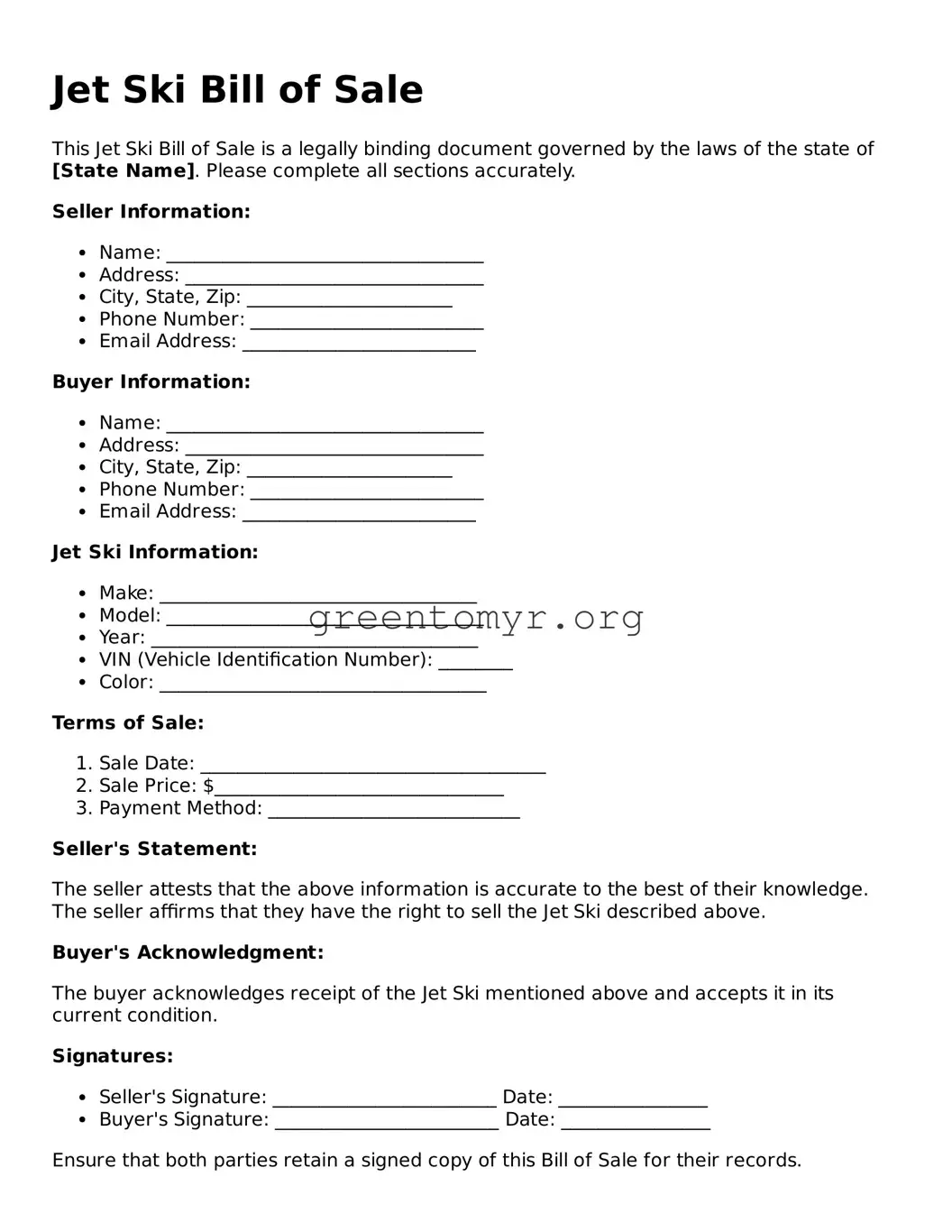Filling out a Jet Ski Bill of Sale form may seem straightforward; however, many people make mistakes that can lead to confusion and complications. One common error is failing to include complete information about the Jet Ski being sold. This includes details like the make, model, year, and vehicle identification number (VIN). Omitting any of this critical information can cause issues when the new owner tries to register the vehicle.
An equally frequent mistake is neglecting to provide accurate personal information. The seller and buyer need to input their names, addresses, and contact information clearly. Errors here can complicate future communications and create potential legal problems. Always double-check to ensure that spelling and details are correct.
Another pitfall involves not signing the document. Both the seller and buyer must sign the Bill of Sale for it to be legally binding. A lack of signatures can render the document incomplete, leading to disputes later on regarding ownership and sale legitimacy.
People often forget to note the sale price. This detail is essential, not just for the transaction itself but also for tax purposes. Failure to include this information can lead to misunderstandings about the transaction value and could raise questions when the new owner pays taxes, leading to unnecessary complications.
Some individuals also overlook the importance of indicating the date of sale. The date is crucial for establishing the timeline of ownership transfer. Without it, one might face challenges should any disputes arise about when the transaction occurred, which can affect liability and warranty issues.
In addition, using incorrect or unclear language can be problematic. Terms should be straightforward and unambiguous. Legal loopholes may arise from vague wording, which can lead to differing interpretations of the agreement, resulting in disputes.
Another error occurs when people incorrectly identify the type of transaction. It’s important to specify whether this is a sale, trade, or gift. Each type has different implications for tax and liability, and mislabeling can create confusion for both parties.
Finally, one of the most significant oversights is failing to keep a copy of the completed Bill of Sale. Both the buyer and seller should retain a signed copy for their records. This document serves as proof of the transaction and can assist in future dealings, such as registering the Jet Ski or resolving any potential disputes.
